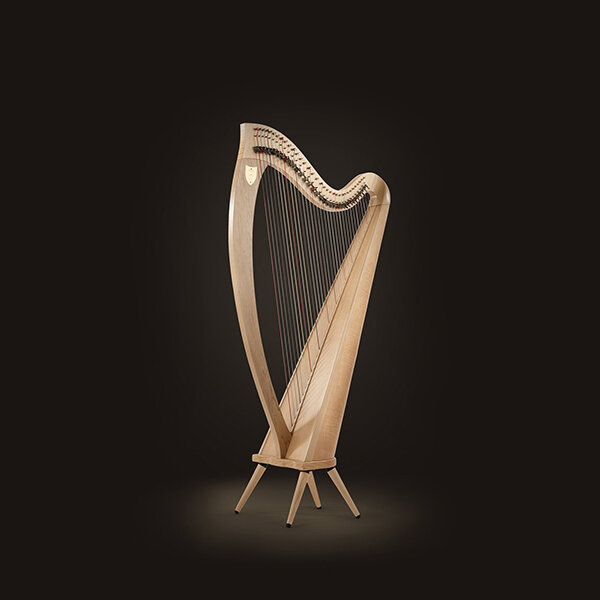

Opening of Palatial New Home of Lyon & Healy Stevens, who was president of Steinway & Sons. In September 1985, CBS announced its departure from the musical instrument business and sold its divisions to a group of Boston area businessmen, including Bruce A. From 1974 to 1985, Lyon & Healy was the property of CBS, which also owned three other musical instrument divisions–Rodgers Organ Co., Steinway & Sons piano company and Gemeinhardt Co., a flute and piccolo maker.

About 85-90% of harps used today are Lyon & Healy harps. It had closed all its retail outlets by 1981, including their flagship store on Wabash Avenue.Īlthough many of the musical wares once sold by Lyon & Healy are no longer available, the company`s “premier role as harpmaker” is still very much in tune today. Lyon & Healy stopped selling many of these products in 1977, concentrating more on making harps.
#LYON AND HEALY HARP OGDEN FULL#
It began to perceive that it could no longer maintain a full range of products and services that included instruments, sheet music, songbooks and music lessons. The company`s image began changing in the 1970s. This harp stands 65.5 inches (166 cm), and weighs 17 kilograms (37 lb). In the 1960s, Lyon & Healy introduced a smaller lever harp, the “Troubadour”, a 36-string harp that is designed for young beginners, who have smaller hands and may find playing a concert harp difficult, as well as hobbyists. It is in the Art Deco style, incorporating bold red and white lines on the soundboard to create a stylized and distinct instrument, that still appears modern and bold even today. In 1928, Lyon & Healy introduced one of the most unusual harps ever designed for mass production, the “Salzedo Model”, designed in collaboration with the harpist Carlos Salzedo. By the 1970s, L&H decided to concentrate solely on the creation and sale of harps. However, In 1920s, Lyon & Healy sold its brass musical instrument manufacturing branch (see “New Langwill Index”). Lyon & Healy produces one of the most ornate and elaborate harps in the world, the Louis XV, which includes carvings of leaves, flowers, scrolls, and shells along its neck and kneeblock, as well the soundboard edges.Ī close-up of a Lyon & Healy harp (left) and Carlos Salzedo standing next to his art deco Salzedo model, which was designed by his friend, the artist Witold Gordon.īy the 1900s, Lyon & Healy was one of the largest music publishers in the world, and sold new and antique violins, pianos, and other instruments. It is 74 inches (190 cm) tall, and weighs about 37 kilograms (82 lb). In many orchestras, patrons may see the harpist playing a gold version of this harp. It has 47 strings, highly decorative floral carving on the top of the column, base, and feet, and has a fleur de lis pattern at the bottom of the column. In 1890, Lyon & Healy introduced the Style 23 Harp, still one of the most popular and recognizable designs in the world. It was in use by Lyon and Healy until 1916. This landmark building, flying the Lyon & Healy banner, was often referred to as the Union Park Factory. Lyon & Healy Factory at Randolph Street and Bryant Place, across from Union Park, circa 1900. Previously, most harps were imported to North America from France, England, Ireland, or Italy by smaller groups of craftsmen. They succeeded in producing a harp notable for its strength, reliability of pitch, and freedom from unwanted vibration. Healy was interested in developing a harp better suited to the rigours of the American climate than the available European models. Lyon patented his cottage upright in 1878 and it was sold under the Lyon and Healy name. Lyon & Healy evidently began manufacturing these instruments around 1876 in its factories in Chicago and nearby cities. Other instruments the company is known to have made include reed organs and pianos. The company won recognition for another first in 1889–building the first American- made harp. Healy, who moved from Boston to start a sheet music shop for music publisher Oliver Ditson. The Chicago-based company, founded in 1864 by George W. It was the first to sell Thomas Edison`s wax-cylinder records, Edison`s and Columbia Co’s Morning Glory Horn phonograph models and the first to promote Victor`s famous Victor Talking Machine Company dog listening to “His Master`s Voice.


 0 kommentar(er)
0 kommentar(er)
